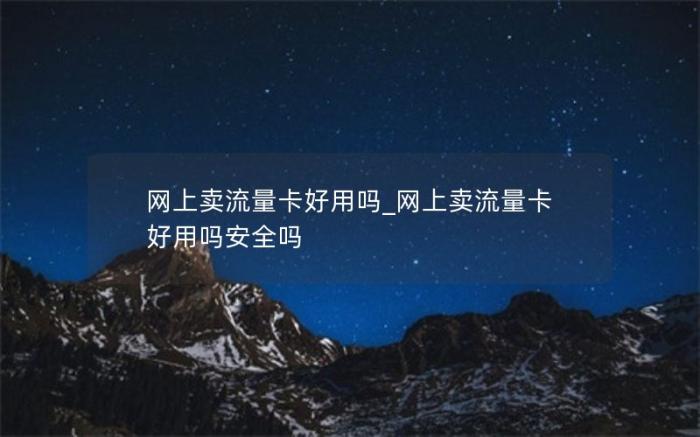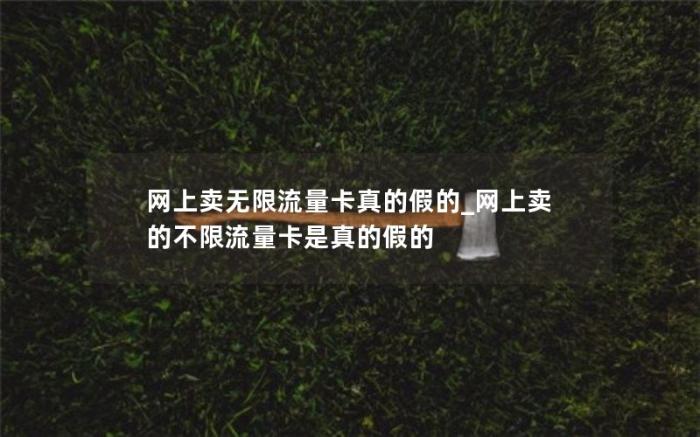Acresso在2009-6-18发布了支持Windows 7的新版本InstallShield 2010,首次发布后,获得用户的不少反馈,于2009-10-6发布Service Pack 1。
修正了如下内容(以下内容转自Acresso的KB):
IOA-000049763 (Merge Module)
The validation information for the Property table is now generated correctly in Merge Module projects that include no properties of their own. Previously in this scenario, the Value column was incorrectly marked as nullable.
IOA-000049954
If you password-protect your Setup.exe file through the Setup.exe tab in the Releases view and your installation includes feature prerequisites, the installation displays a password prompt only when the end user first launches Setup.exe. The installation no longer displays a prompt when the feature prerequisites are launched.
IOA-000050574
Message boxes that are launched by the InstallScript function SdShowMsg are now displayed in front of the installer window that launched SdShowMsg, but not in front of any subsequently launched windows that are opened by end users. Previously, SdShowMsg message boxes were displayed in front of all windows. This applies to InstallScript installations, InstallScript MSI installations, and Basic MSI installations that contain InstallScript custom actions and are run with a full user interface.
Note that if a function such as SdShowMsg, MessageBox, or AskYesNo is used in a custom action in a Basic MSI project and the installation is run with a limited user interface (that is, with a basic UI, a reduced UI, or no UI), the message box could be displayed behind any other open windows. This occurs because the parent window of the message box cannot be found, so the desktop is considered to be the parent window. Displaying any UI from any type of custom action that is sequenced in the Execute sequence is strongly discouraged; if this is avoided, the issue with SdShowMsg, MessageBox, and other functions displaying behind other windows does not occur.
IOA-000050575
If you are creating an operating system condition for an InstallShield prerequisite, you can now specify the number zero for the service pack maximum; this indicates that no service pack should be installed on the target system in order for the condition to evaluate as true. Previously if you entered the number zero, the installation behaved as though no service pack maximum was specified for the InstallShield prerequisite.
IOA-000050816 (Transform)
The Specify Output File Name panel in the Transform Wizard now lets you specify the location and name of the file by using the Browse button. Previously, if you used the Browse button to specify the location and name, a “file not found” error was displayed; to work around the issue, it was necessary to manually enter the location and name.
IOA-000050944 (InstallScript)
If you use a custom dialog skin in a project that contains setup prerequisites, the installation no longer displays a blank area on the setup prerequisite dialog at run time. Previously, the list of setup prerequisites disappeared from this dialog after end users selected a prerequisite in the list and then clicked the Install button.
IOA-000051224 (InstallScript, InstallScript MSI)
If the InstallScript functions PlaceBitmap and SetTitle are used to show a full-screen bitmap image and specify the text on the image, the specified title is now displayed correctly on the image. Previously, part of the title was cut off.
IOA-000051686 (Virtualization)
When InstallShield is determining the target folders that are represented by each directory in the .msi package during the App-V conversion process, it checks to see if the package contains set-a-property and set-a-directory custom actions that alter the directory target location. Now InstallShield has better handling for this scenario, enabling the conversion process to better resolve Windows Installer variables that are used by the custom action to set the directory target; this results in fewer -9137 conversion warnings. Previously, the conversion process failed to determine the correct directory target location when such a custom action used properties or references to other Windows Installer variables such as environment variables to specify the target.
IOA-000051784 (Basic MSI, InstallScript MSI)
When you have specified release flags and product configuration flags for a release that you are building in the Releases view, and the release includes an InstallShield prerequisite that also has a release flag that needs to be included in the release, the installation installs the prerequisite if appropriate. Previously, if no prerequisites were included without such flags, the installation ignored the prerequisite. In addition, if any feature prerequisites were included, the installation would relaunch itself after the end user clicked the Install button.
IOB-000058268 (Virtualization)
When creating a virtual package, InstallShield can now decompress certain .msi packages that could not previously be decompressed. Previously in certain cases, virtual conversion error -9006 occurred for these .msi packages.
IOC-000081344
If a file is selected on the Application to Run tab in the InstallShield Prerequisite Editor, that file is the one that is launched on the target system at run time when the installation runs that InstallShield prerequisite. Previously, if the InstallShield prerequisite also included a file that started with the same string of characters as the file that was selected to be run, the installation may have launched the wrong file.
IOC-000081558 (Basic MSI)
If you are using the Unicode setup launcher type and your project includes one or more Unicode-only languages (such as Hindi), the installation can now be run in those languages. Previously when end users launched the Setup.exe file, run-time error 1208 occurred; the error message stated that the code page for the specific language was not available on the target system.
IOC-000081594 (Virtualization)
If you use the App-V Application Launcher utility (AppVLauncher.exe) to launch an App-V application that does not contain any shortcuts, the App-V Application Launcher now displays a more informative message: “No application OSD files were found. Most App-V packages have OSD files which are entry points (similar to shortcuts) to launch applications.” The previous message was, “There are no application OSD files.”
IOC-000081717 (InstallScript, InstallScript MSI)
If you upgrade a project from InstallShield 2009 or earlier to InstallShield 2010 SP1, and the earlier project contained one or more dialogs that were edited on a machine that had a large or custom DPI setting selected, the dialogs are now imported into the project correctly. Previously, the dialogs were smaller than they should have been.
IOC-000081969 (Basic MSI, InstallScript MSI)
If a multilanguage installation is run on a 64-bit target system and the installation contains an InstallScript custom action that has Deferred Execution in System Context selected for its In-Script Execution setting, that custom action can now be executed successfully. In addition, Windows Installer no longer crashes in that scenario.
IOC-000082018 (Basic MSI, InstallScript, InstallScript MSI)
Some IIS settings that are configured in the Internet Information Services view and that were previously configured incorrectly at run time are now configured correctly at run time.
In addition, if your project includes an application pool that you configured through the Internet Information Services view, you select the SpecificUser option for the application pool’s Identity setting, and you specify a password in the SpecificUser Password setting, the password is now set correctly at run time.
IOC-000082019 (Basic MSI, InstallScript MSI)
If a project that was created in an earlier version of InstallShield contains a Windows Mobile installation, and that project is upgraded to InstallShield 2010 SP1, the Windows Mobile application is now installed at run time. Previously at run time, the Application Manager (CeAppMgr.exe) was not launched, so the Windows Mobile application could not be installed.
IOC-000082066 (Basic MSI)
InstallShield now includes a new 64-bit EulaScrollWatcher.dll file that you can use in a custom action that will run on 64-bit target systems. This DLL enables you to require end users to scroll through the EULA in the LicenseAgreement dialog. Previously, the only EulaScrollWatcher.dll file that InstallShield included would fail on 64-bit systems.
For detailed instructions, see “Requiring End Users to Scroll Through the EULA in the LicenseAgreement Dialog” in the InstallShield Help Library.
IOC-000082210 (Virtualization)
When you build an App-V package, the Output window now displays a link to the build output folder for the virtual package.
IOC-000082370 (Virtualization)
The Package Information page of the Microsoft App-V Assistant now includes options for targeting Windows 7 and Windows Server 2008 R2.
IOC-000082427 (Basic MSI, InstallScript MSI)
Build error -1530 no longer occurs if you try to build a network image release that uses compression and automatic disk spanning, and if the release includes a large file for an InstallShield prerequisite whose location is Copy from Source Media.
IOC-000082470 (Virtualization)
The Microsoft App-V Assistant now lets you add shortcuts that point to files that are not in the App-V package.
IOC-000082496 (Virtualization)
The App-V Application Launcher utility (AppVLauncher.exe) now adds the App-V package to the client and uses the OVERRIDEURL option, which overrides the application source root (ASR) setting. As a result of adding the package instead of just individual OSD applications, the file extensions and shortcuts of the package are now published to the machine. Previously, the AppVLauncher.exe failed to successfully launch OSD files in an App-V client environment that had the ASR set.
IOC-000082545
When InstallShield is used within Visual Studio and a referenced project has a short name, InstallShield now resolves project output groups correctly, and build error -6221 no longer occurs.
IOC-000082568 (Virtualization)
In OSD files, paths for items such as shortcut parameters and environment variables now correctly refer to the root drive of the machine by using C:\ instead of %drive_c%\.
IOC-000082570 (Virtualization)
If you choose to include an installation package for the App-V package as part of the App-V package build output and you specify to have the application loaded from the shared location (thus, the .sft file is not included in the installation package), the installation package now determines whether the .sft file is in the same folder as the installation package. If the .sft file is in the same folder, the .sft file location is now passed to the App-V client when the application is loaded. If the .sft file is not in the same folder, the location that is specified in the manifest file and the OSD files is used. Previously, the location that was specified in the manifest file and the OSD files was used regardless of whether the .sft file was in the same folder.
IOC-000082597 (Basic MSI)
When Setup.exe launches a 64-bit .msi package, it now launches the 64-bit version of Windows Installer to work around a Windows Installer problem. As a result, a 64-bit minor upgrade (or a 64-bit installation run in maintenance mode) that updates files in System64folder no longer generates run-time error -2324.
IOC-000082647 (Basic MSI, InstallScript MSI, QuickPatch)
If you create an installation that uses the MsiServiceConfig, MsiServiceConfigFailureActions, or MsiLockPermissionsEx tables—which are new for Windows Installer 5—the patch cannot be marked as uninstallable. Thus, Val0015 now displays a warning if any of these tables are included in a release when upgrade and patch validation is performed.
IOC-000082648 (Virtualization)
InstallShield includes a new machine-wide setting that lets you specify an existing writable location where all virtual packages should be built. You may want to use this global setting if you are converting .msi packages that are in a read-only location to virtual packages.
To configure the machine-wide setting, find the Settings.xml file that is installed with InstallShield. In that Settings.xml file, enter the path as the text content for the <GlobalBuildRedirectFolder> element, which is a child element of the <Virtualization> element.
IOC-000082651
The IIS scanner (IISscan.exe) now scans non-default Web sites and creates XML files that record the values of the settings that you can configure in the Internet Information Services view in InstallShield. Previously in this scenario, the IIS scanner displayed an error message that indicated that the Web site could not be found; in addition, the XML file was not generated.
IOC-000082757 (Basic MSI)
InstallShield no longer adds the SQLBrowse dialog to your project if you upgrade it from an earlier version of InstallShield to InstallShield 2010 SP1, and if the project does not contain a SQL connection that was configured in the SQL Scripts view.
IOC-000083046 (Virtualization)
InstallShield now creates the .osd, manifest, and .sprj files with UTF-8 encoding when building App-V packages; this matches the behavior of the Microsoft Application Virtualization Sequencer. Previously, InstallShield created these files with UTF-16 encoding, which seemed to lead to parser errors on some systems that had Cumulative Update 1 for Microsoft Application Virtualization 4.5.
万炳宏(Kevin Wan)
Avizo/Amira技术交流,欢迎加我微信:13911850365或QQ:17842153


 支付宝扫一扫
支付宝扫一扫 微信扫一扫
微信扫一扫













